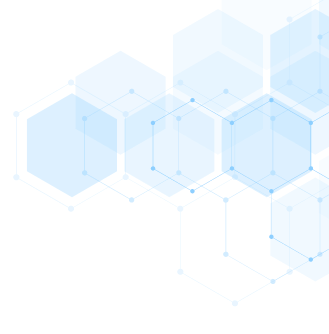DESCRIPTION
MECHANISM OF ACTION
• Potent and selective small-molecule inhibitor of the kinase activity of wild-type and certain activating mutations of epidermal growth factor receptor (EGFR), resulting in inhibition of EGFR autophosphorylation and
inhibition of EGFR signaling.
• Inhibition of the EGFR tyrosine kinase results in inhibition of critical mitogenic and antiapoptotic signals involved in proliferation, growth, metastasis, angiogenesis, and response to chemotherapy and/or
radiation therapy.
• Active in the absence or presence of EGFR-activating mutations, although activity appears to be higher in tumors that express EGFR-activating mutations.
ABSORPTION
Oral bioavailability is approximately 60% and increased by food to almost 100%.
DISTRIBUTION
Extensive binding (90%) to plasma proteins, including albumin and 𝛂1-acid glycoprotein, and extensive tissue distribution. Peak plasma levels are achieved 4 hours after ingestion. Steady-state drug concentrations are reached in
7–8 days.
INDICATIONS
1. FDA-approved as first-line treatment of metastatic NSCLC with EGFR exon 19 deletion or exon 21 (L858R) substitution mutations.
2. FDA-approved as monotherapy for treatment of locally advanced or metastatic NSCLC after failure of at least one prior chemotherapy regimen.
3. FDA-approved as maintenance treatment of patients with locally advanced or metastatic NSCLC whose disease has not progressed after four cycles of platinum-based first-line chemotherapy.
4. FDA-approved in combination with gemcitabine for the first-line treatment of locally advanced unresectable or metastatic pancreatic cancer.
DOSAGE RANGE
1. NSCLC—Recommended dose is 150 mg/day PO.
2. Pancreatic cancer— Recommended dose is 100 mg/day PO in combination with gemcitabine.
DRUG INTERACTION 1
Phenytoin and other drugs that stimulate the liver microsomal CYP3A4 enzymes, including carbamazepine, rifampin, phenobarbital, and St. John’s Wort—These drugs may increase the metabolism of erlotinib, resulting in its inactivation and lower effective drug levels.
DRUG INTERACTION 2
Drugs that inhibit the liver microsomal CYP3A4 enzymes, including ketoconazole, itraconazole, erythromycin, and clarithromycin—These drugs may decrease
the metabolism of erlotinib, resulting in increased drug levels and potentially increased toxicity.
DRUG INTERACTION 3
Warfarin—Patients receiving warfarin should be closely monitored for alterations in their clotting parameters (PT and INR) and/or bleeding, as erlotinib may inhibit the metabolism of warfarin by the liver P450 system. Dose of warfarin may require careful adjustment in the presence of erlotinib therapy.
SPECIAL CONSIDERATIONS
1. Use with caution in patients with hepatic impairment, and dose reduction and/or interruption should be considered.
2. Nonsmokers and patients with EGFR-positive tumors are more sensitive to erlotinib therapy.
3. Erlotinib should not be used in combination with platinum-based chemotherapy, as there is no evidence of clinical benefit.
4. Closely monitor patients for new or progressive pulmonary symptoms, including cough, dyspnea, and fever. Erlotinib therapy should be interrupted pending further diagnostic evaluation.
5. Consider increasing the dose of erlotinib to 300 mg in patients with NSCLC who are actively smoking, as the metabolism of erlotinib by CYP1A1/1A2 in the liver is induced.
6. In patients who develop a skin rash, topical antibiotics such as clindamycin gel or erythromycin cream/gel or oral clindamycin, oral doxycycline, or oral minocycline may help.
7. Avoid Seville oranges, starfruit, pomelos, grapefruit products, and grapefruit juice while on erlotinib therapy.
8. Avoid the concomitant use of PPIs and H2-blockers, as they can reduce the oral bioavailability of erlotinib. If an H2-blocker must be used, erlotinib should be taken 10 hours after the H2-blocker and at least 2 hours before the next H2-blocker.
9. Pregnancy category D. Breastfeeding should be avoided.
TOXICITY 1
Pruritus, dry skin with mainly a pustular, acneiform skin rash occurring most often on face and upper trunk. Nail changes, paronychia, painful fissures or cracking of the skin on hands and feet, and hair growth abnormalities, including alopecia, thinning hair with increased fragility (trichorrhexis), darkening and increased thickness of eyelashes and eyebrows (trichomegaly), and hirsutism.
TOXICITY 2
Diarrhea is most common GI toxicity. Mild nausea/vomiting and mucositis.
TOXICITY 3
Pulmonary toxicity in the form of ILD manifested by increased cough, dyspnea, fever, and pulmonary infiltrates. Occurs rarely and observed in less than 1% of patients and more frequent in patients with underlying pulmonary disease.
TOXICITY 4
Mild-to-moderate elevations in serum transaminases. Usually transient and clinically asymptomatic.
TOXICITY 5
Anorexia.
TOXICITY 6
Conjunctivitis and keratitis. Rare cases of corneal perforation and ulceration.
TOXICITY 7
Rare episodes of GI hemorrhage.
TOXICITY 8
Radiation-recall skin reactions.
SPECIFICATION


Login To Comment